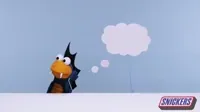This chapter seemed to surprise me because as a potential math teacher I came into
this program without thinking much about reading throughout the different content
areas. One of my favorite quotes from this chapter was “they have difficulty focusing
at the start of the period and are easily distracted, particularly when they don’t
understand something” (p. 277). This made me stop and think because often times,
my first thought is that these kids do not want to learn not that they can’t but rather
that it is a conscious choice not to. But after reading this chapter it came clear to me
that these students are more often than not the ones I need to focus my I found the
strategies listed very helpful and very basic which is perfect for all of the learners in
the classroom. I felt like there really was a different access point for all students
regardless of their strengths, any special needs concerning literacy (dyslexia, etc.),
or interest level in the material at hand. I feel like after reading this chapter and the
previous one, it seems to me to be a worthwhile use of my time to teach these
different strategies and show the students how to use them in the classroom. I
believe that by using them in the classroom students will be more engaged or at
least be able to be more engaged. Students have minds of their own and it will be
very difficult to reach all of them but I will try and these strategies will support my
efforts in doing so.
Word count: 264




